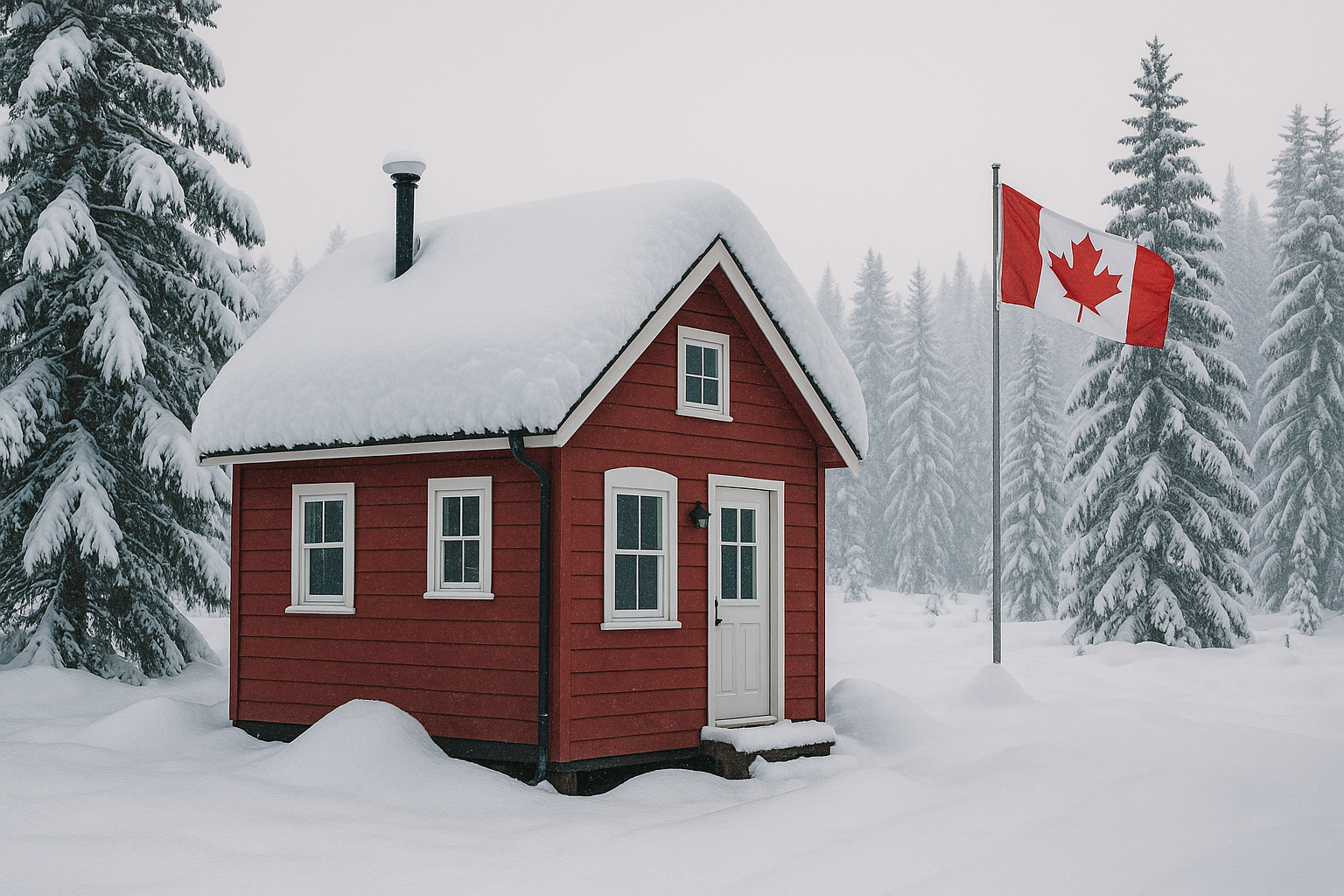
Canadian Snow Load Requirements: How They Shape Safe Winter Tiny Homes
Estimated reading time: 10 minutes
Key Takeaways
- Understanding Canadian snow load requirements is crucial for tiny home safety and longevity.
- Tiny house building codes adapt national standards to the unique demands of small-scale construction in harsh weather.
- Precise snow load calculations ensure that your tiny home can withstand heavy snowfall and severe conditions.
- Consulting local building officials and licensed engineers is essential for compliance and structural integrity.
Table of Contents
Designing safe and durable winter tiny homes in Canada starts with a deep understanding of Canadian snow load requirements. These requirements not only ensure that your home can support heavy snowfall but also help meet local tiny house building codes and provide overall structural safety in the Canadian climate. Ignoring them can lead to unsafe living conditions and legal complications.
The Omni Calculator – Snow Load is an excellent resource that helps you determine the minimum structural capacity needed to hold the weight of even the heaviest snowfalls. Regional variations—from the mild winters of Vancouver to the heavy snow of Northern Ontario—demand a careful, customized approach.
Overview of Snow Load Requirements and Calculations
Canadian snow load requirements are established by national and provincial building codes. They define the minimum strength that roofs and supporting structures must have to withstand accumulated snow. This is critical to preventing roof collapse, leaks, and structural weaknesses.
Builders use detailed snow load calculations that incorporate factors such as location, roof shape, pitch, and local weather conditions. For more detailed studies on how these calculations are performed, reference resources like the Omni Calculator or Dlubal’s Snow Load Zones.
Tiny House Building Codes & Snow Loads
Tiny homes must comply with local building codes that are adapted from the National Building Code of Canada. Given the compact nature of these structures, special considerations include:
- Minimum ceiling heights and structural support to ensure stability.
- Adaptations for trailer-based designs and unique insulation methods.
- Reinforced framing and carefully selected materials to manage snow loads effectively.
For more on the legal aspects and requirements, see the guide on Tiny Home Legal Requirements Canada.
Impact on Structural Safety
Structural safety in the Canadian climate means that every component of your tiny home—from the roof beams to the insulation—must be engineered to handle the stresses caused by heavy snowfall, ice, and freeze/thaw cycles.
Neglecting proper snow load calculations can lead to catastrophic issues such as:
- Roof collapse under the weight of snow.
- Water infiltration that may result in interior damage and mold.
- Failure of load-bearing walls and floor systems.
Using high-strength materials and ensuring accurate calculations help mitigate these risks and get your tiny home winter-ready.
How to Calculate Snow Loads
Follow this step-by-step guide to determine the appropriate snow load for your tiny home:
- Identify Local Requirements: Review your province’s specific snow load values using tools like the Omni Calculator – Snow Load or maps from Dlubal.
- Analyze Roof Characteristics: Consider roof pitch, shape, and material. Steeper roofs and non-stick materials like metal help reduce snow accumulation.
- Account for Exposure: Local wind conditions and surrounding structures can affect how snow drifts on your roof.
- Consult a Licensed Engineer: Professional assessment ensures your calculations are accurate and compliant with local codes.
Ensuring Compliance & Safety
Building a safe tiny home in harsh winter conditions involves more than accurate calculations—it requires ongoing diligence:
- Consult Local Building Officials: Confirm which tiny house building codes and snow load requirements apply in your area.
- Use Engineer-Stamped Plans: Secure drawings that are reviewed and stamped by a licensed structural engineer.
- Select Robust Materials: Invest in high-quality, code-approved materials including reinforced framing, durable roofing, and insulation.
- Schedule Regular Inspections: Inspect your structure post-construction and after heavy snowfalls to ensure continued safety.
Keeping up with maintenance is essential. For additional tips, visit the ADU Maintenance Checklist for seasonal care guidance.
Conclusion
Adhering to Canadian snow load requirements is essential for constructing safe, resilient winter tiny homes. By calculating precise snow loads, following tailored building codes, and employing robust materials, you ensure the structural integrity and longevity of your home.
Prioritize professional consultation, invest in quality materials, and commit to regular maintenance. This multi-pronged approach guarantees not only compliance with legal standards but also the lasting safety and comfort of your tiny home throughout Canada’s harsh winters.
Frequently Asked Questions
- Q: Why are Canadian snow load requirements critical for tiny homes?
- A: They ensure that structures can handle heavy snowfall, thus preventing roof collapse, water damage, and other safety issues.
- Q: Can online tools accurately calculate snow loads?
- A: Online tools like the Omni Calculator – Snow Load provide a good baseline, but a licensed engineer should always verify the results.
- Q: Do tiny homes require special considerations compared to traditional homes?
- A: Yes, due to their compact size, tiny homes must use tailored building codes and materials that ensure proper load distribution and resistance against heavy snow.
- Q: What design strategies help reduce snow accumulation?
- A: Steep roof pitches, use of metal roofing, and high-strength materials help ensure that snow slides off instead of accumulating dangerously.

Leave a Reply